Best Desi Ghee at Home | Pure Desi Ghee Recipe
In the heart of Indian kitchens, one can find a golden and aromatic ingredient that has been cherished for generations – Desi Ghee. Also known as clarified butter, desi ghee is an integral part of Indian cuisine and holds a special place in cultural practices and rituals. Beyond its delicious taste and rich aroma, desi ghee offers numerous health benefits and has been used for its medicinal properties for centuries.
Desi ghee is commonly used in various Indian dishes, including Indian bread (roti, paratha), rice dishes (biryani, pulao), lentils (dal), sweets (moong dal halwa, atte ka halwa, Sweet Vermicelli, ladoo).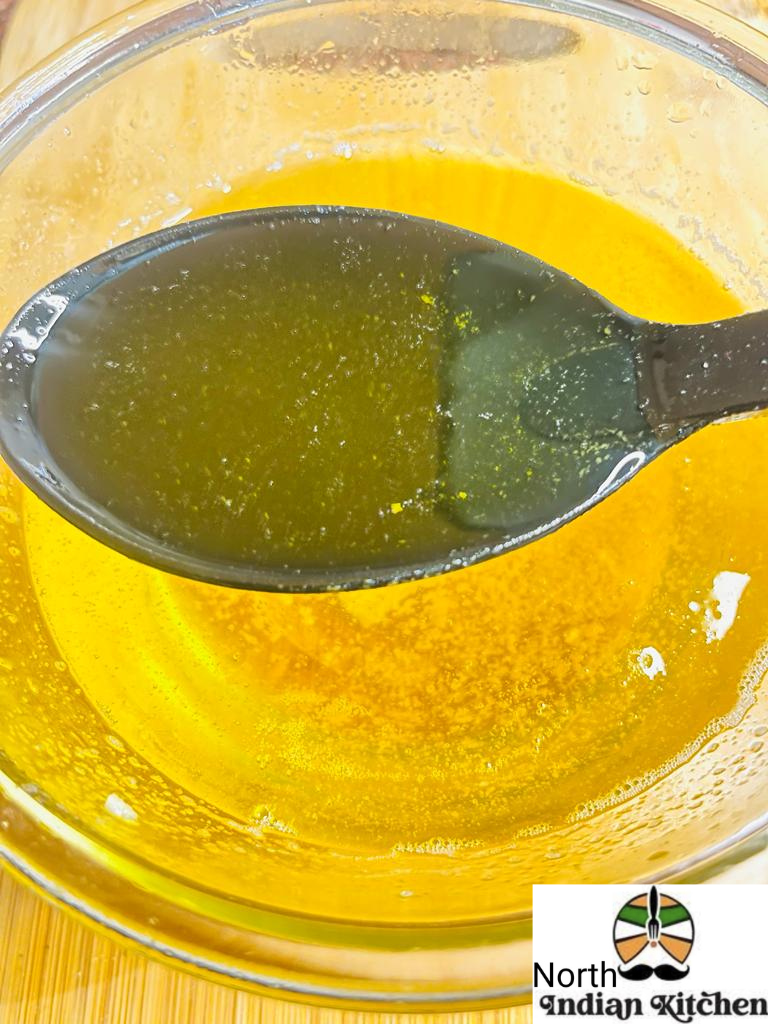
Now, we will explore the art of making homemade desi ghee, revealing its nutritional value and simple steps to prepare this revered ingredient in the comfort of your own home.
Desi Ghee can be used in:
The Significance of Desi Ghee in Indian Culture
Desi ghee has been an essential part of Indian culinary culture for thousands of years. It is not merely an ingredient; it holds deep cultural significance. In religious ceremonies, desi ghee is offered as a sacred offering, symbolizing purity and prosperity.
During festivals and celebrations, it is generously used in preparing traditional sweets and dishes, enhancing their flavor and texture. Apart from culinary uses, desi ghee is also used in Ayurvedic medicine for various therapeutic purposes due to its healing properties.
Nutritional Value of Desi Ghee
While desi ghee is a fat-rich ingredient, it contains several essential nutrients that make it a healthier option compared to other cooking oils. It is rich in saturated fats, which are beneficial for the body when consumed in moderation. The key nutrients found in desi ghee include:
Omega-3 Fatty Acids: These healthy fats are known to support heart health, reduce inflammation, and promote brain function.
Vitamins A, D, E, and K: These fat-soluble vitamins play crucial roles in maintaining healthy vision, strong bones, immune function, and blood clotting.
Conjugated Linoleic Acid (CLA): CLA, found in desi ghee, is known to have anticancer properties and aids in weight management.
Butyrate: Desi ghee contains butyrate, a short-chain fatty acid that supports gut health and reduces inflammation in the digestive system.
Step-by-Step Guide (with pics) to Making Homemade Desi Ghee
Instructions:
Step 1: Begin by taking the 1 kg (1medium sized glass bowl) old malai from home. 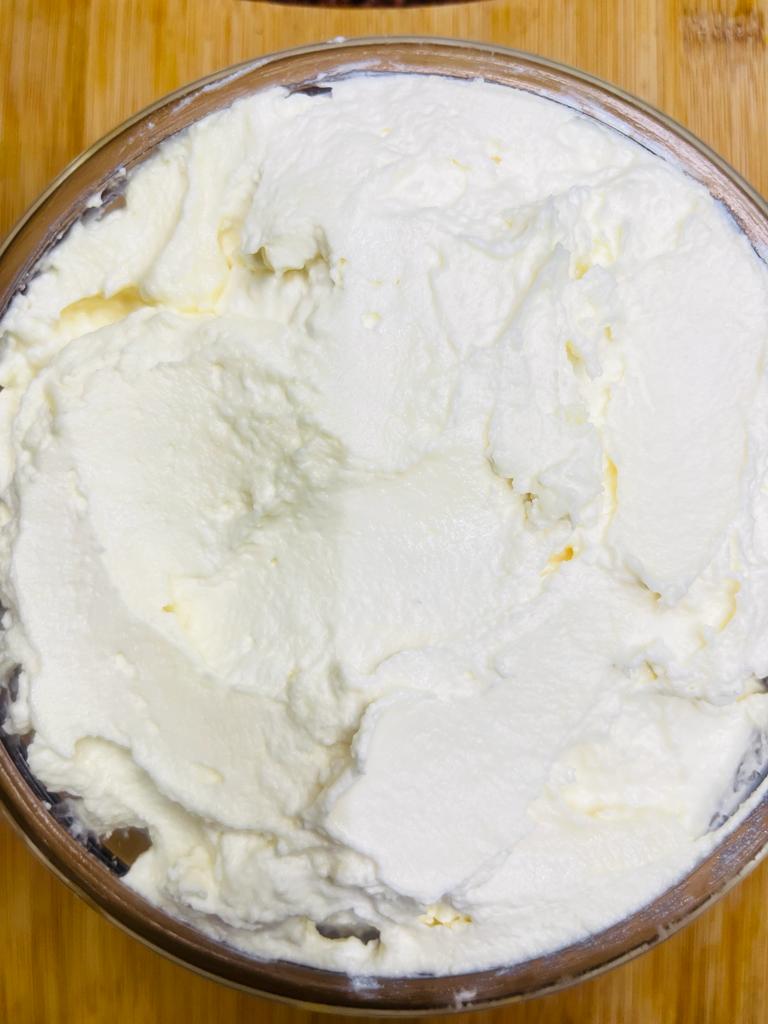 Step 2: Afterwards add water in malai.
Step 2: Afterwards add water in malai.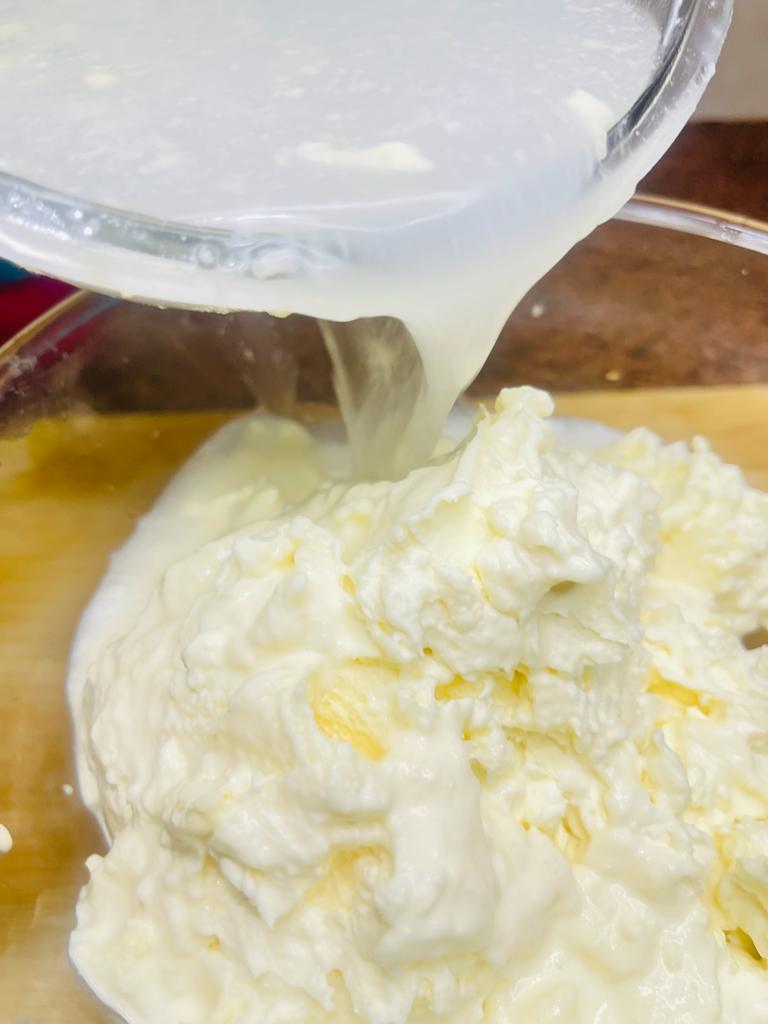 Step 3: Grind the malai with mixer-grinder, blender or food processor.
Step 3: Grind the malai with mixer-grinder, blender or food processor.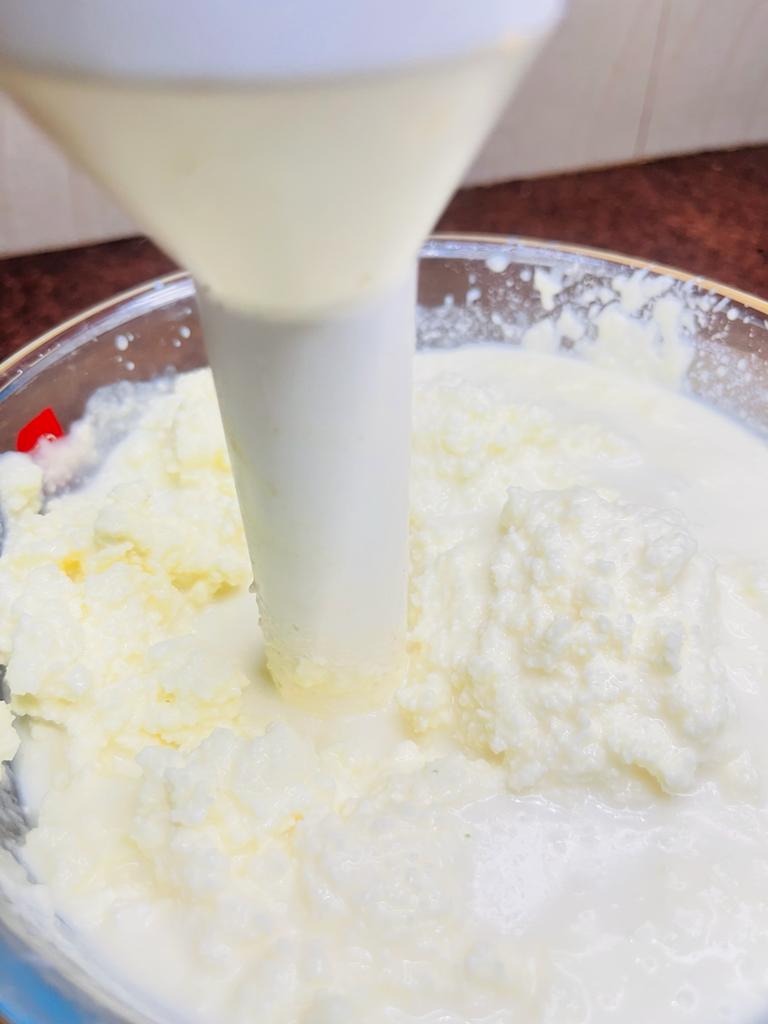 Step 4: Separate the water from malai by taking it as a ball with soft hands. Then place it in a bowl.
Step 4: Separate the water from malai by taking it as a ball with soft hands. Then place it in a bowl.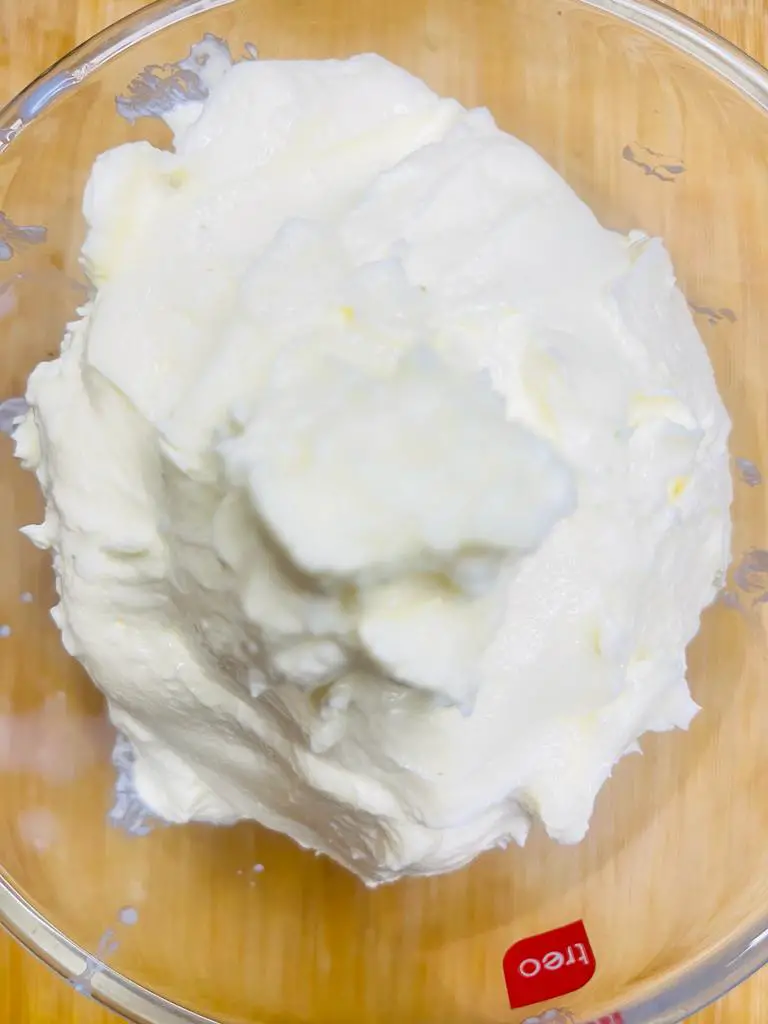 Step 5: Take 2 cup of chilled water in a bowl or you can add 4-5 ice cubes in normal water.
Step 5: Take 2 cup of chilled water in a bowl or you can add 4-5 ice cubes in normal water.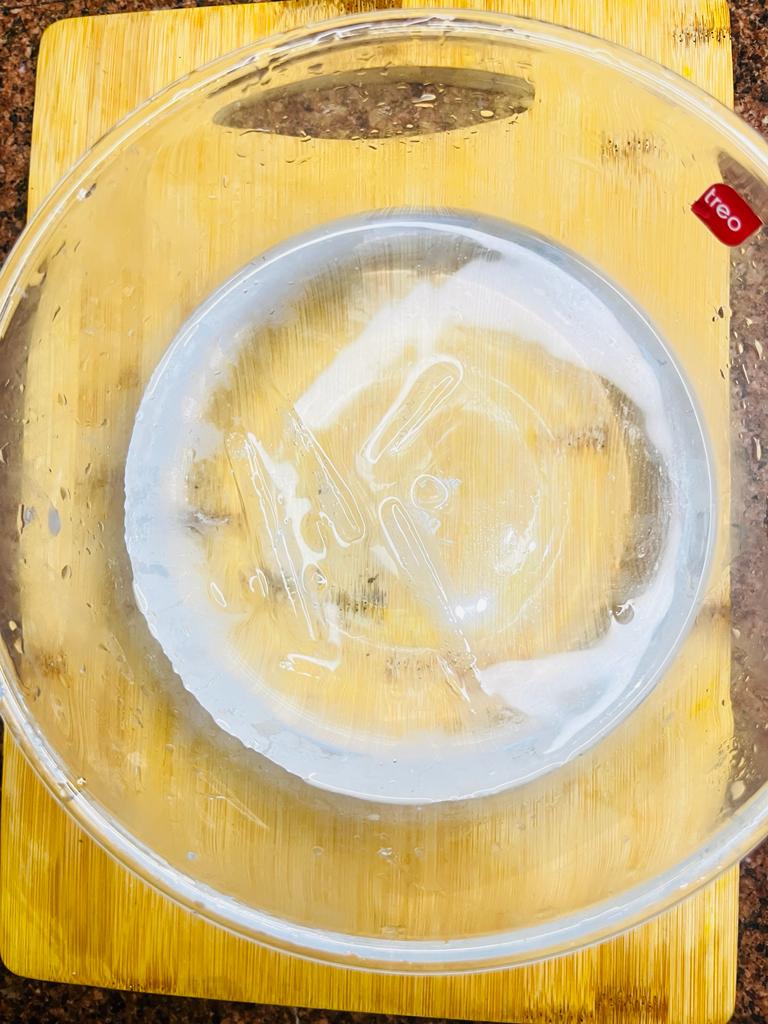 Step 6: Transfer the balled malai in it. It will helps in tightening the malai and gives smooth texture.
Step 6: Transfer the balled malai in it. It will helps in tightening the malai and gives smooth texture.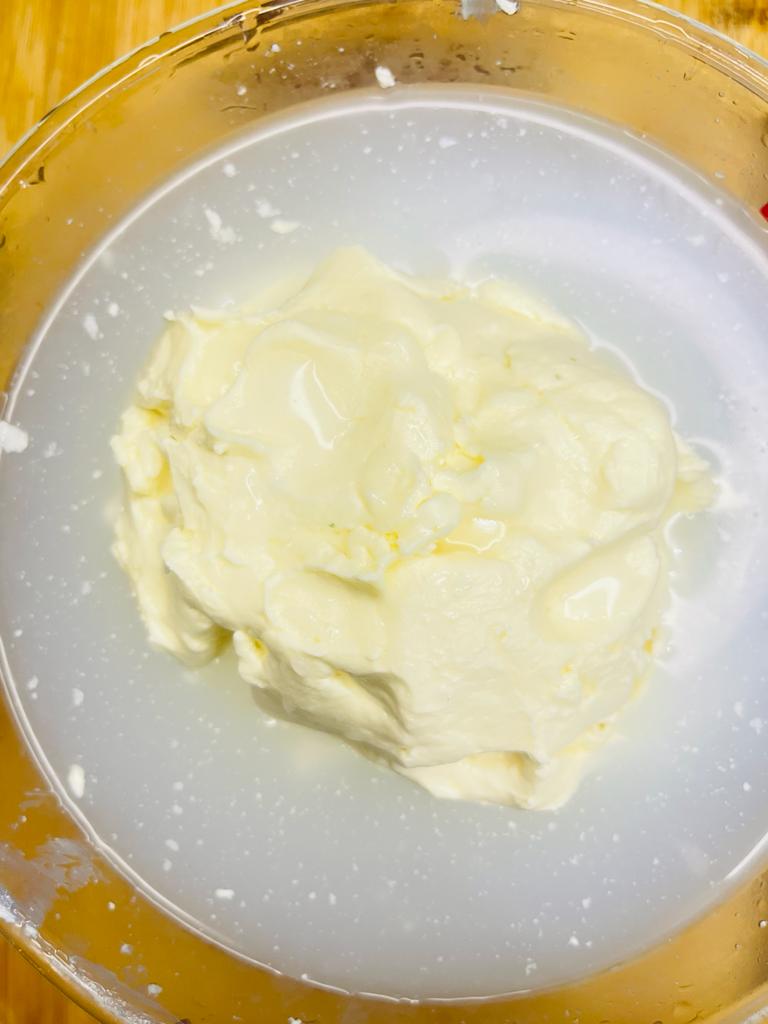 Step 7: Place a kadai on medium high flame and transfer the malai in it.
Step 7: Place a kadai on medium high flame and transfer the malai in it.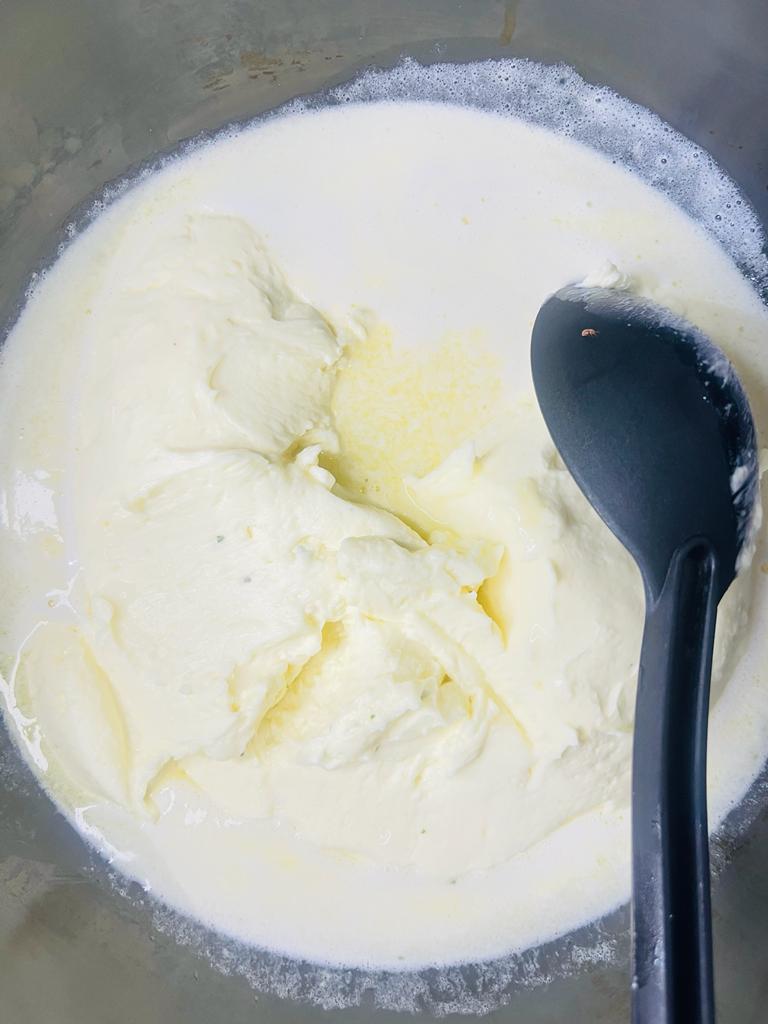 Step 8: Cook it until it boils and ghee separated from chiddi. Once the simmering stops, and the milk solids turn light brown, turn off the heat. This indicates that the ghee is ready.
Step 8: Cook it until it boils and ghee separated from chiddi. Once the simmering stops, and the milk solids turn light brown, turn off the heat. This indicates that the ghee is ready.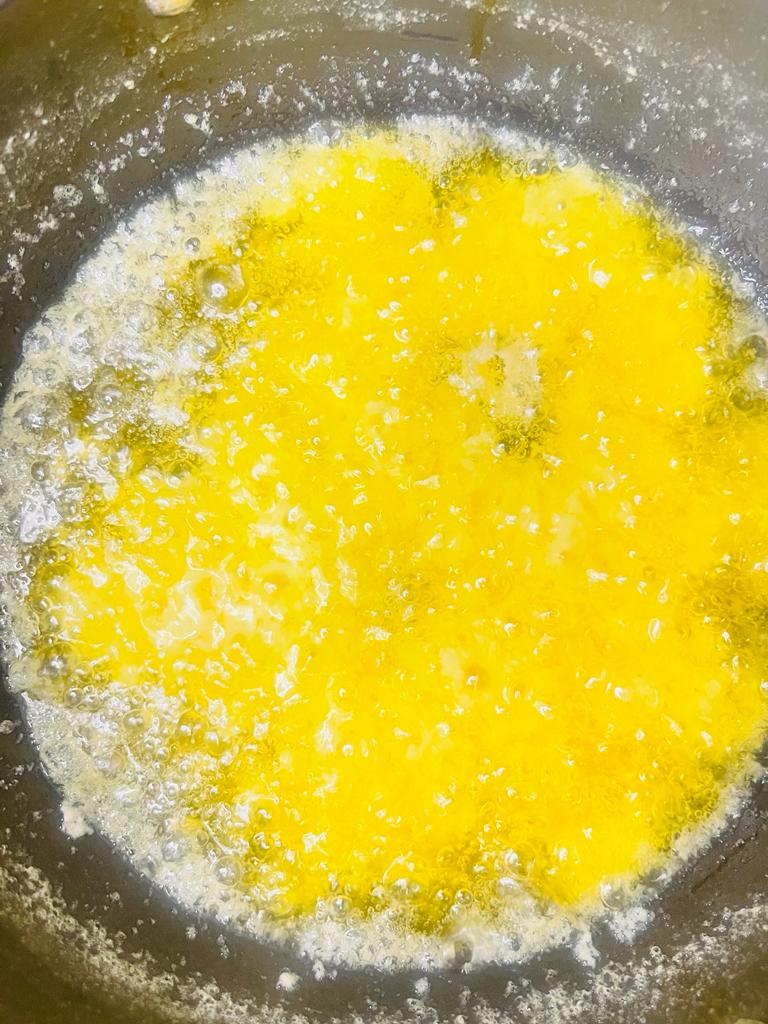 Step 9: Using a sieve, strain the ghee to remove any leftover milk solids. This step ensures that your desi ghee is pure and clear.
Step 9: Using a sieve, strain the ghee to remove any leftover milk solids. This step ensures that your desi ghee is pure and clear.
Step 10: Carefully transfer the hot prepared ghee to a bowl to cool down at room temperature. Then store it in any container for further use. 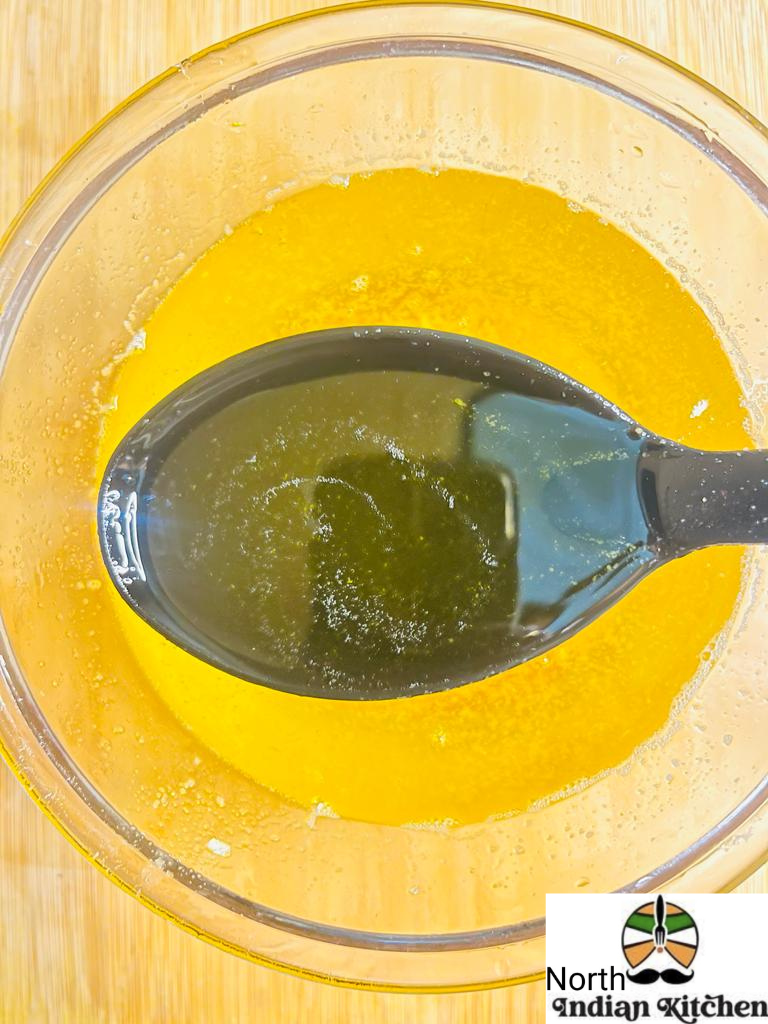
Your perfect homemade desi ghee is ready. Making desi ghee at home is a simple process that requires minimal effort.
Expert Tips
Quality of Butter: Start with high-quality unsalted butter. The taste and aroma of your ghee will largely depend on the butter you use. Opt for butter made from fresh cream and avoid using margarine or low-quality alternatives.
Use a Heavy-Bottomed Pan: A heavy-bottomed pan helps distribute heat evenly and prevents the ghee from burning. Copper or stainless steel pans work well for this purpose.
Low to Medium Heat: Use low to medium heat throughout the process. Cooking on high heat may lead to uneven cooking or burnt ghee.
Skim the Foam: Regularly skim off the foam that forms on the surface. This foam contains milk solids and impurities that can affect the purity and taste of the ghee.
Keep an Eye on the Color: Watch the color change of the butter closely. The ghee is ready when it turns into a beautiful golden color with a nutty aroma.
Avoid Distractions: Making ghee requires attention and time. Avoid multitasking or leaving the kitchen while the ghee is simmering to prevent any accidents.
Strain Carefully: Use a fine-mesh sieve or cheesecloth to strain the ghee. Be cautious as the ghee will be hot. Straining ensures the removal of any remaining milk solids.
Store Properly: After the ghee has cooled down, store it in a clean, dry, and airtight glass jar. Keep it away from moisture and direct sunlight to maintain its freshness.
Experiment with Clarifying Times: The duration for which you simmer the butter can affect the flavor of the ghee. Longer simmering can result in a stronger nutty flavor, while shorter times yield milder ghee.
Customize with Spices: For added flavor, you can infuse the ghee with spices like cardamom, cinnamon, or cloves. Add these spices to the melted butter and strain them out before storing the ghee.
Use in Moderation: While desi ghee is delicious and nutritious, it is still calorie-dense. Use it in moderation as part of a balanced diet.
Health Considerations: If you have dietary restrictions or health concerns, consult a healthcare professional before incorporating desi ghee into your diet.
FAQs
Q. What is desi ghee?
A. Desi ghee, also known as clarified butter, is a traditional staple in Indian cuisine. It is made by simmering unsalted butter to remove water, milk solids, and impurities, leaving behind a pure, golden liquid with a higher smoke point and longer shelf life than regular butter.
Q. Can I make desi ghee from salted butter?
A. It is recommended to use unsalted butter to make desi ghee. Salted butter may contain added salt, which can affect the flavor and quality of the ghee.
Q. How long does it take to make homemade desi ghee?
A. The time required to make desi ghee can vary depending on factors such as the heat used and the amount of butter being clarified. On average, it takes approximately 20 to 30 minutes to make desi ghee.
Q. How do I know when the ghee is ready?
A. The ghee is ready when the butter turns a beautiful golden color, the bubbling subsides, and the liquid becomes clear. It will also emit a nutty aroma, indicating that the milk solids have been separated and the ghee is ready to be strained.
Q. Can I use ghee for deep-frying?
A. Yes, ghee has a high smoke point, making it suitable for deep-frying. It adds a delightful flavor to fried foods and provides a crispy texture.
Q. How should I store homemade desi ghee?
A. After the ghee has cooled down to room temperature, store it in a clean, dry, and airtight glass jar. Keep it away from moisture and direct sunlight. Properly stored ghee can last for several months.
Q. Is desi ghee healthy?
A. Desi ghee is considered healthy when consumed in moderation. It is a rich source of healthy fats, vitamins A, D, E, and K, and antioxidants. However, being calorie-dense, it’s essential to use it in moderation as part of a balanced diet.
Q. Can lactose-intolerant individuals consume desi ghee?
A. The process of making desi ghee involves removing the milk solids, which also reduces the lactose content. As a result, some lactose-intolerant individuals may find desi ghee more tolerable than butter or regular dairy products. However, it’s essential to consult a healthcare professional if you have lactose intolerance or any dietary concerns.
Q. Can I use ghee in baking?
A. Yes, ghee can be used in baking as a substitute for butter or oil. It adds a unique flavor to baked goods and can enhance the taste of various dishes.
Q. What are some traditional Indian dishes that use desi ghee?
A. Desi ghee is commonly used in various Indian dishes, including Indian bread (roti, paratha), rice dishes (biryani, pulao), lentils (dal), sweets (halwa, ladoo), and many more. Its rich flavor and aroma make it a versatile ingredient in Indian cooking.
If you like this recipe then try out other DIY recipes also:
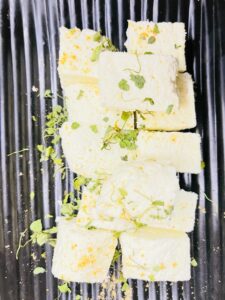
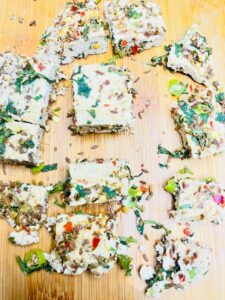
Please be sure to rate this recipe or leave a comment below if you have made it. For more vegetarian & non – vegetarian inspirations, Sign Up for my emails or follow me on Instagram, Youtube, Facebook, Pinterest or Twitter.
Desi Ghee Recipe Card
Equipments
Ingredients
- 1 kg Malai
- 4-5 Ice-cubes
- 2 cup Water
Instructions
- Begin by taking the 1 kg (1medium sized glass bowl) old malai from home. 2. Afterwards add water in malai.3. Grind the malai with mixer-grinder, blender or food processor.4. Separate the water from malai by taking it as a ball with soft hands. Then place it in a bowl.5. Take 2 cup of chilled water in a bowl or you can add 4-5 ice cubes in normal water.6. Transfer the balled malai in it. It will helps in tightening the malai and gives smooth texture.7. Place a kadai on medium high flame and transfer the malai in it.8. Cook it until it boils and ghee separated from chiddi. Once the simmering stops, and the milk solids turn light brown, turn off the heat. This indicates that the ghee is ready.9. Using a sieve, strain the ghee to remove any left over milk solids. This step ensures that your desi ghee is pure and clear.10. Carefully transfer the hot prepared ghee to a bowl to cooldown at room temperature. Then store it in any container for further use. Your Desi Ghee is now ready
Video
Notes
- In summer you can take malai not older than 15 days and in winter not older then 1 month.
- Use mash to sieve ghee properly as the solid particles will get out of it.
- For best results always use homemade malai.
- Use chilled water for malai tightening.

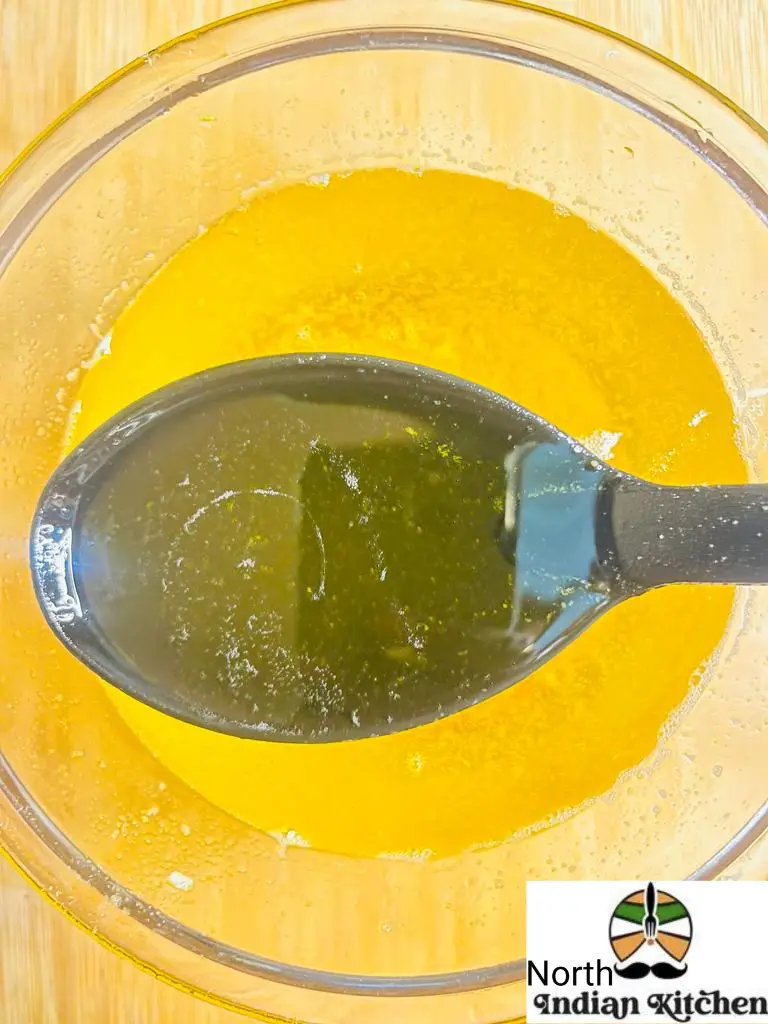
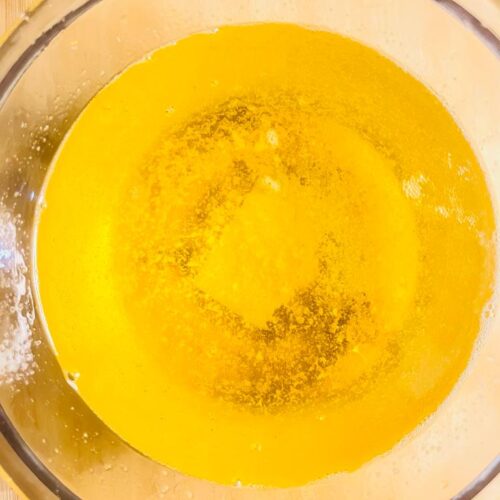

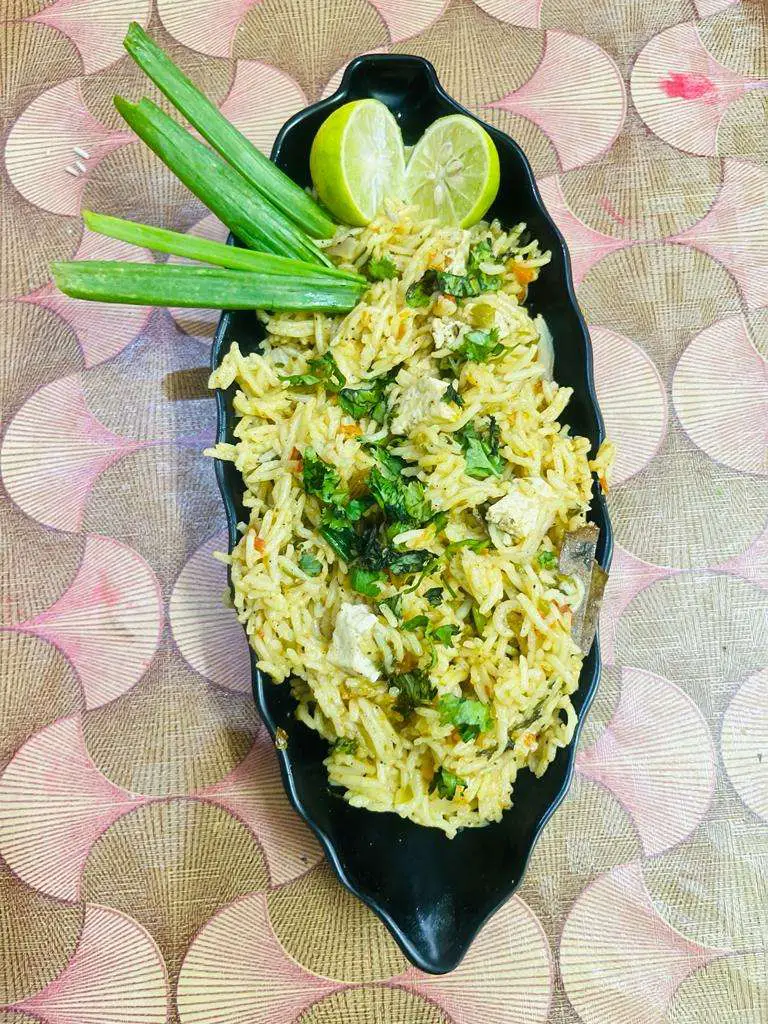



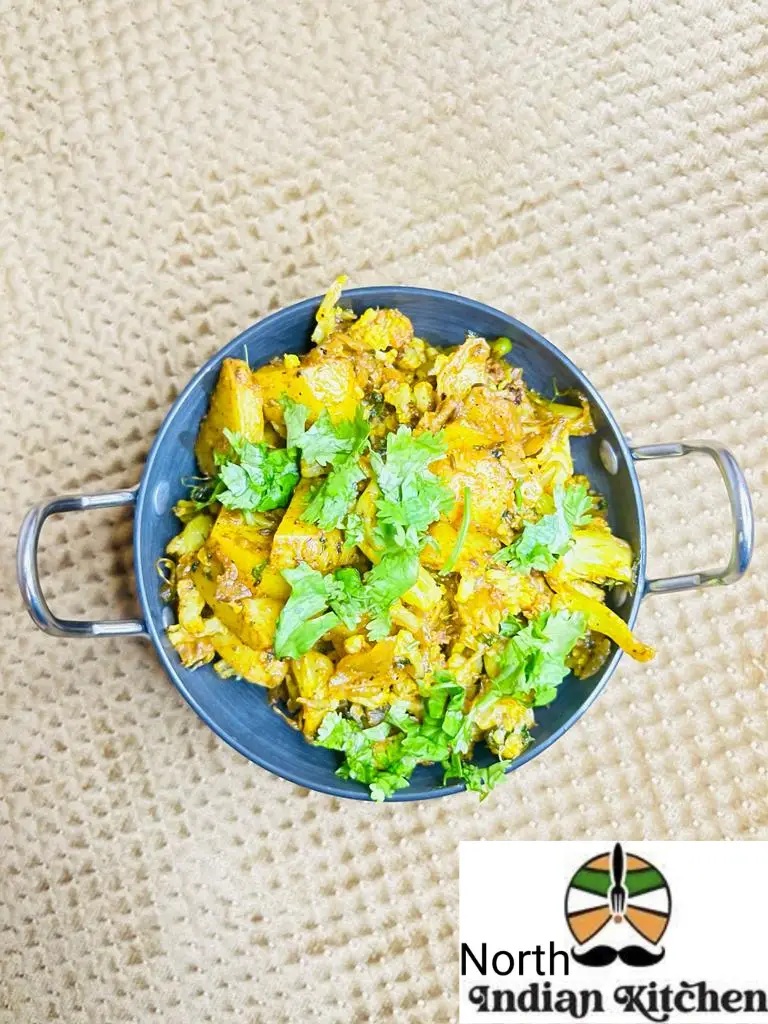
Best recipe to make all recipes delicious. So easy recipe you suggest.
Thanks for your feedback. We are very glad that you like our recipes.